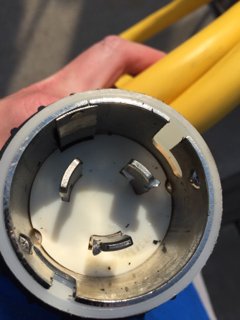MichaelB1969
Guru
- Joined
- Oct 15, 2016
- Messages
- 682
- Location
- USA
- Vessel Name
- Speedy Charlotte
- Vessel Make
- Beneteau Swift Trawler 44
Probably a stupid question, but if I use an adapter to convert 30amp outlet at dock to 50amp outlet on my boat, how would I tell of my air conditioning should work?
And is that what you normally do with a 50amp boat at a slip with 30amp?
Thanks,
Mike
And is that what you normally do with a 50amp boat at a slip with 30amp?
Thanks,
Mike



